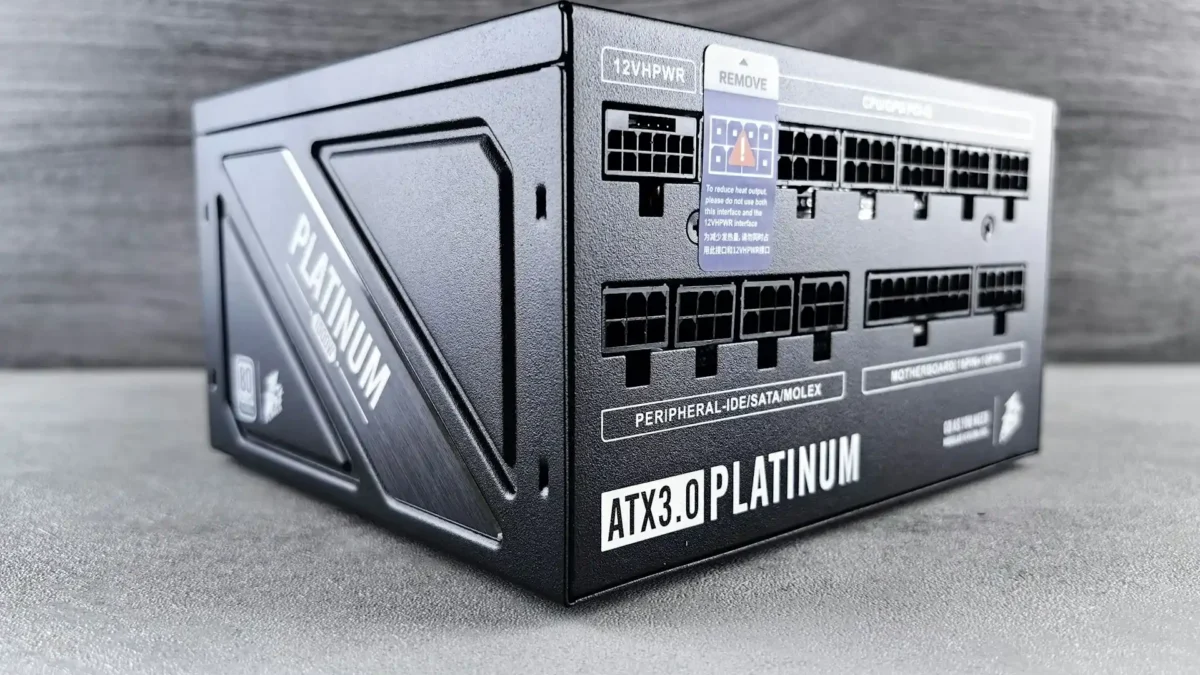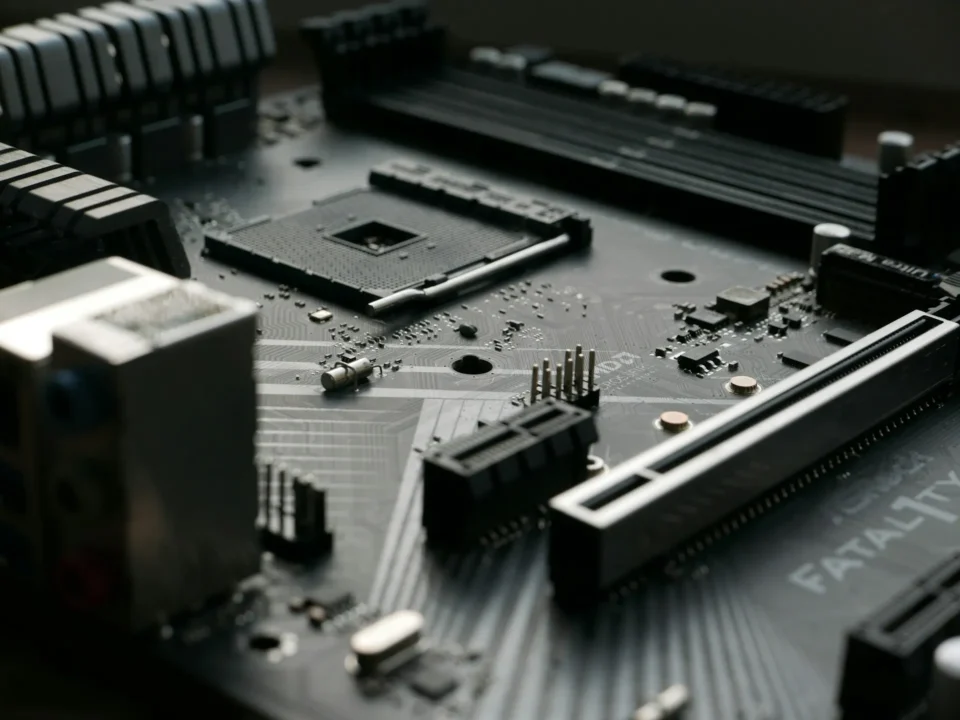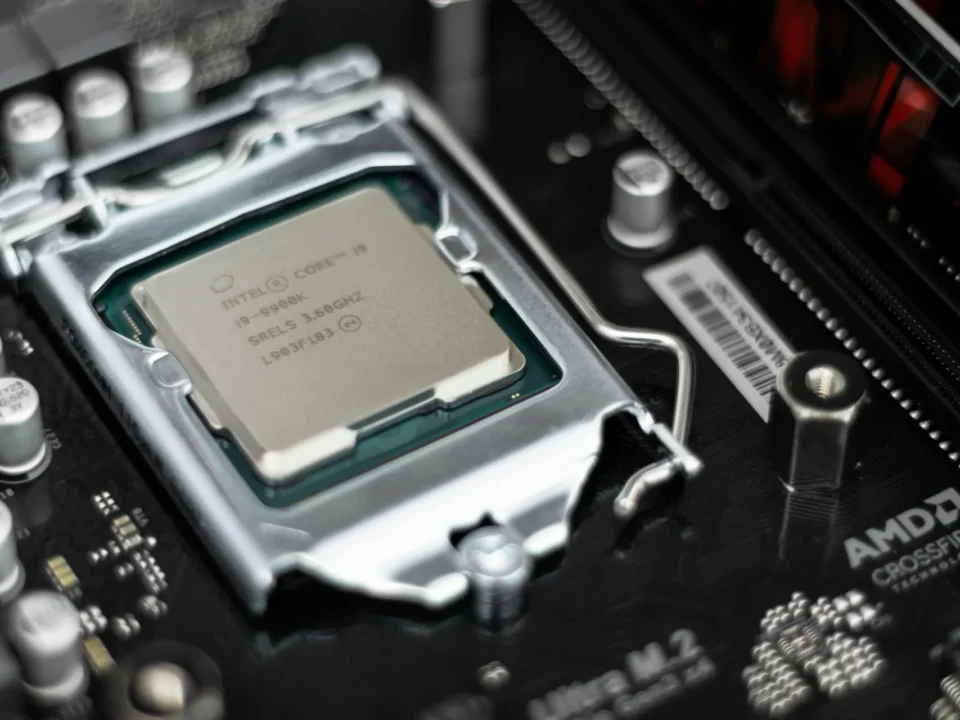What a PSU Actually Does & What “Efficiency” Ratings Mean

Best CPU for your needs in 2025
August 20, 2025
What a motherboard actually is, and why it matters
October 23, 2025A power supply unit converts the alternating current (AC) from your wall outlet into direct current (DC) voltages that your computer’s components (CPU, GPU, motherboard, drives, etc.) need. It also provides various voltages (3.3V, 5V, 12V) and standby power.
One important metric is efficiency: how much of the electricity drawn from the wall is actually used by your PC, vs how much is lost as heat. Higher efficiency means less wasted energy, less heat, quieter cooling, and lower electricity bills. PSU efficiency is certified by programs like 80 PLUS, which has multiple levels: Standard, Bronze, Silver, Gold, Platinum, Titanium (and recently in some cases Ruby, for data centers).
Here are what some of those levels mean in practice:
- Bronze / Silver: decent efficiency, moderate cost.
- Gold: good balance of high efficiency and price.
- Platinum: higher end; less waste, better components, often quieter.
- Titanium: top-tier; maximum efficiency, often with premium build quality.
Another factor: power factor, noise, voltage regulation, ripple, and whether the PSU is modular (fully, semi, or non-modular) are all part of its quality and usability.
What to Look for When Choosing a PSU
When selecting a PSU, consider:
- Wattage capacity: How much power your system will draw under load (peak GPU, CPU, peripherals). Leave headroom (e.g. 20‑30%) so it’s not constantly near max.
- Rail design: Many PSUs provide single or multiple +12V rails. What matters is that the PSU can deliver enough clean, stable power on its +12V rail(s), since most heavy components draw from 12V.
- Form factor / connectors: Standard ATX vs SFX vs small form‑factor builds; whether there are enough PCIe connectors for a big GPU; whether it supports newer connectors (like 12VHPWR for newer graphics cards).
- Protection features: Over‑voltage, under‑voltage, short‑circuit, over‑current, over‑temperature protection. A good PSU will include these.
- Efficiency certification: As mentioned above.
- Build quality / brand reputation: Good capacitors, quality cooling fan(s), good warranty.
Power Supplies for Different Use‑Cases in 2025
Depending on what you use your PC for, your PSU needs will differ. Below are recommended ranges and options for various user types: regular home/office users, gamers, and heavy workloads (content creation, rendering, AI, etc.). Also included are older but still viable PSUs to consider if you’re on a budget.
- Everyday / Regular Use
If you mostly use the PC for web browsing, watching videos, office applications, light multitasking, maybe streaming, you don’t need a big or super premium PSU. What you need is reliability, quiet operation, and enough headroom for minor upgrades.
What to aim for:
- PSU Wattage: ~300‑500 W depending on your components (basic CPU, maybe integrated graphics or low‑end GPU).
- Efficiency: Bronze or Silver is usually enough; Gold is nice if the price gap isn’t large.
- Modular is nice, but in many simple builds non‑modular or semi‑modular is acceptable.
Good new options:
- A 450W 80 PLUS Silver PSU from a reputable brand.
- 500W Gold units if planning for future upgrades (e.g. adding a dedicated GPU).
Older / budget options that are still usable:
- Bronze or Silver rated PSUs from a generation or two ago (e.g., older Bronze units with solid brand + warranty).
- Used but still good PSUs, provided you check that they have been lightly used, still hold capacitance, and haven’t been overheated.
- Gaming PCs
Gaming raises demands on the PSU, especially when using mid‑range or high‑end GPUs, overclocking, or pushing high frame rates. GPUs often draw a lot of power, especially under load. If you pair a powerful GPU with a weak or low quality PSU, you risk instability, crashes, or worse.
What to aim for:
- PSU Wattage: depends a lot on GPU. For a single mid‑range GPU plus a modern CPU, typically 600‑750W. For high‑end GPUs (RTX 4080/4090, Radeon 7900 series, etc.) or dual GPU setups, maybe 850W or more.
- Efficiency: Gold is a good target. Platinum if you want quieter operation and better long‑term efficiency.
- Connectors: Enough PCIe power connectors; possibly the newer high‑wattage connectors (12VHPWR etc.) if using newer cards.
Good new options:
- 650‑750W 80 PLUS Gold from a reliable brand like Seasonic, Corsair, EVGA, etc.
- 800‑1000W Gold or Platinum units for high‑end gaming + streaming.
Older / budget picks:
- Older Gold or Platinum PSUs that are no longer flagship models. Often available second‑hand.
- Well‑built Bronze or Silver units that were over‑sized (e.g. a 700W Silver PSU) can still perform well, though with less efficiency and maybe more fan noise.
- Heavy Workloads: Content Creation, Rendering, AI, Multi‑GPU
If you’re doing rendering, video editing (especially 4K/8K), simulation, machine learning, or using multiple GPUs, then your PSU is critical. It must deliver very high current on 12V rails, maintain stable voltages under big loads, have strong protection, good efficiency, possibly redundancy or high wattage.
What to aim for:
- PSU Wattage: 1000W and above for high‑end setups (multi GPU). Single GPU workstation still often needs at least 750‑850W, depending on GPU, CPU, drives, cooling.
- Efficiency: Platinum or Titanium if budget allows, for lower heat, lower electric bills, quieter cooling.
- Cabling and connectors: Must support all needed power outputs for GPUs, CPU, peripherals. Possibly multiple 12V PCIe connectors, robust connectors.
- Cooling, build quality: Heavy workload means sustained high power draw, so good cooling and high component quality (capacitors, etc.) matter.
Good new options:
- 1000‑1200W Platinum PSUs from premium manufacturers.
- Titanium rated PSUs for those chasing highest efficiency.
Older / still usable picks:
- Older units of 1000W Gold or Platinum that still meet specs, rest well, and have good warranty.
- Medium wattage Gold/Platinum units used in lower‑intensity workloads.
Efficiency Certifications, What They Mean and How Much They Matter
The 80 PLUS certification levels (Bronze, Silver, Gold, Platinum, Titanium) indicate minimum efficiency thresholds at specific loads (usually 20%, 50%, 100% of the rated load). Higher certification means less wasted power and heat. For example, a Platinum or Titanium PSU will convert a larger proportion of the AC‑input power into usable DC output, thus generating less heat and drawing less electricity for the same output compared to a Bronze or Silver of the same wattage.
There’s also a newer/corollary standard called Cybenetics, which adds evaluations for noise and sometimes tighter efficiency tests. If you find PSUs rated by both, those are often high quality.
That said, for many users, a Gold PSU is “good enough” because it gives a strong balance of price, efficiency, and performance. Move up to Platinum or Titanium if you are interested in saving on power over years, want quieter operation, or pushing high loads.
Practical Advice: What PSU Do You Need?
To figure out which PSU is right for your build, ask yourself:
- What GPU and CPU are you using / planning to use?
- Are you going to overclock or add another GPU later?
- What is your budget vs what you care about (quietness, energy bills, lifespan)?
- Do you have space for a larger PSU or high wattage connectors?
Then choose:
- A PSU with some headroom (don’t run it at 100% load continuously; aim for maybe 50‑70% of its rated load under typical usage).
- One with good efficiency certification (Bronze or better; Gold or higher if possible).
- From a reputable brand with good reviews for voltage stability, protection features, and warranty.
Matching PSU to Use Case
Here is how different kinds of users will tend to choose:
- Regular home / office user: A 400‑500W Bronze or Silver PSU will usually suffice, unless you plan to add a discrete GPU.
- Gaming user: Generally a 600‑850W Gold PSU, maybe Platinum if going for premium, with enough PCIe power connectors.
- High‑end / workstation / multi‑GPU / content creation: 1000W‑1200W or more, Platinum or Titanium, top‑tier parts & cooling.




